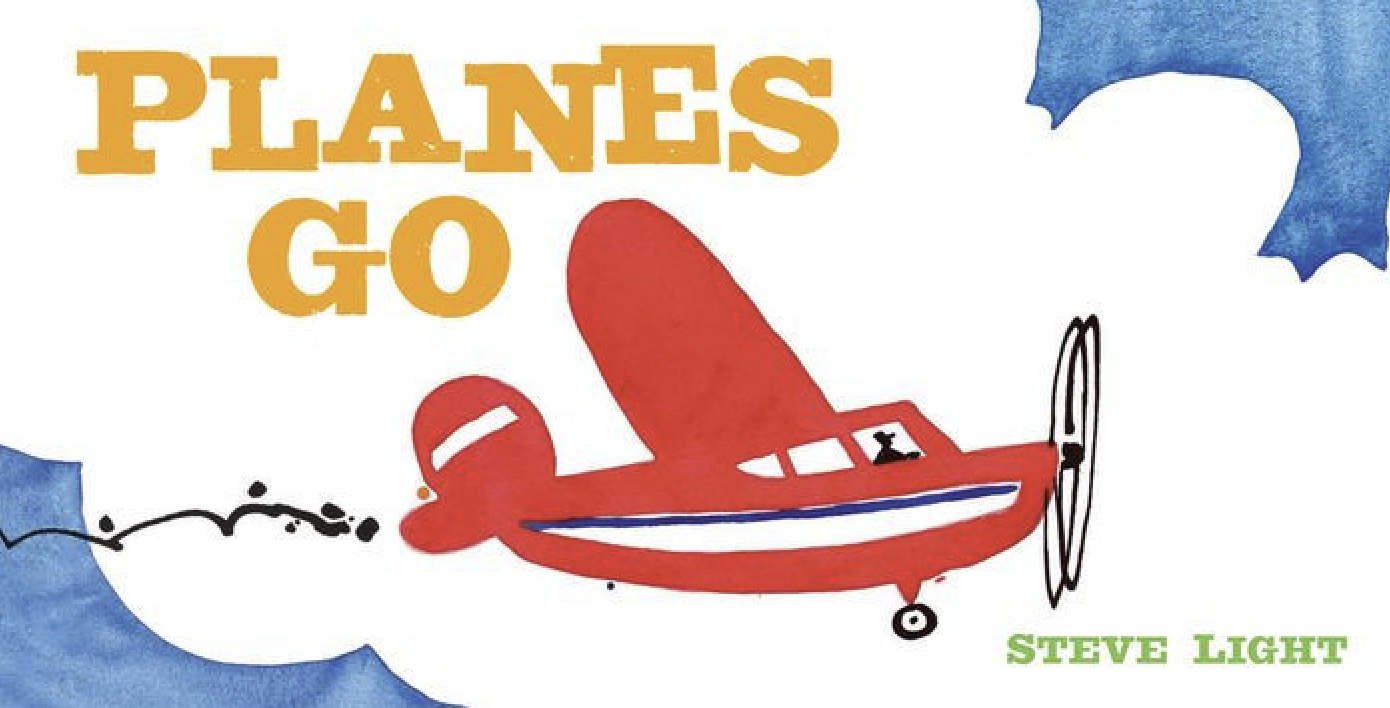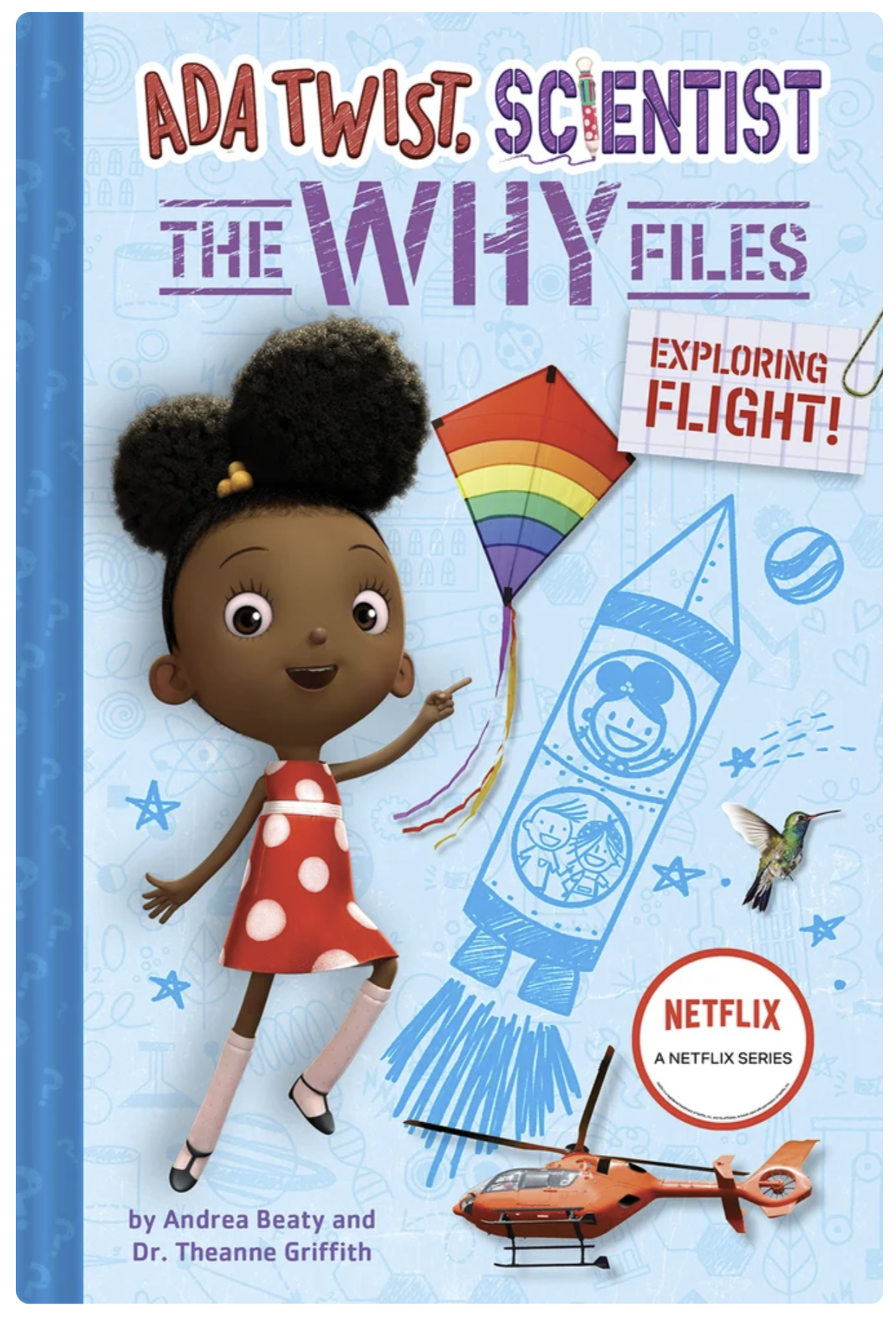Flight
Thanks for joining us!
This episode was written by Jean and voiced by Kara and T.
Episode art was drawn by Jean.
It was originally released in September 2025.
— Enjoy these books about planes and flight —
Click on each photo for a link to the book on our Bookshop.org account
— Download our airplane printable! —
— Favorite toys that celebrate flight —
Brio has some real cute, interactive flight toys
Make something actually fly through the air!
— Learn about flight from Smithsonian’s Air & Space Museum —
— Flight Episode Summary —
Animals that fly —
In nature, there are so many animals that can fly: small birds, large birds, cardinals, robins, blue jays, goldfinches, hummingbirds, ladybugs, beetles, insects like bees, flies, fireflies, dragonflies… What can you think of, friends?
Birds use their strong muscles to flap their wings up and down. As they move forward, the air moves above and below their wings, keeping them up in the sky.
Some insects, such as bees, kind of twist their wings back and forth.
People have been looking at flying animals for hundreds of years to try to understand how they stay up and move in the air. And they have learned so much that now people can fly, but we need machines to help us do it.
How can airplanes fly? Thrust, lift, weight & drag —
Now that we can fly, it gets us farther and faster than we could ever go on land. Our family recently took an airplane over the United States from one coast of our country to the other. It took almost six hours, but if we were driving in a car, it would take many days. Being able to fly has completely changed the way people get around the world.
So airplanes are pretty heavy, right? They have seats, they have windows, they have carts of food in them, they have all these people, all this luggage. We know that with all that and the metal and the glass and engine parts, that an airplane is heavier than the air.
There are some very smart people who like science and know about machines that fly. They're called aeronautical engineers.
Aeronautical is a word which comes from two old words. “Aero” means air or atmosphere. And “nautical” means relating to ships and navigation, which is traveling around the sea. So altogether, an aeronautical engineer designs ships that go in the air. They are always working to make airplanes fly faster, longer, and safer.
They tell us that there are four things that make a large machine, an airplane, fly. And these four things are thrust, lift, weight, and drag.
Okay, so the first thing an airplane needs to do to get up into the air is travel very fast down a long stretch of road called a runway. The plane goes faster than any car, and planes have really powerful engines that push them forward and are controlled by a pilot. The force they create is called thrust.
The plane starts to lift off the ground when the speed is right, and with the help of another important thing, the wings. You may have seen that most airplanes have two long wings, one on each side, like a bird. The wings are rounded on top, and that rounded top of the wing makes the air on the top of the wing move faster than the air below the wing.
And as the air flows above and below the wings, it makes something called pressure. When a plane has more pressure under the wing than on top of the wing, you get a force called lift. And we've heard of lifting, right? You lift someone up in the air. You lift your stuffed animal off the ground. Lift is the force that pushes the plane up because of the air flowing around the wings.
And the faster the air flows, the more lift it creates. And then there is a force called weight, which wants to pull that plane down.
Now, you may have heard of a force called gravity. Gravity wants to pull all objects on Earth down, down towards the center of the Earth. It's what keeps people on the ground, not floating up in the air. Weight is caused by gravity. And to fly, the lift force that's lifting you up must be greater than the weight force pushing down.
And last, one more, is a force called drag. This is a force which is moving against the forward motion of the plane. This force would make the plane slow down, but those powerful engines keep it moving forward so that it has thrust.
Keeping all these words straight can be confusing. It definitely is for me. But a simple way to understand it is that to fly, an airplane needs more pressure lifting it up than weight pushing it down, and more thrust pushing it forward, then it has drag pulling it backward.
Going up and down and controlling the airplane in the air —
Once we get the right amount of those forces, then the plane is flying in the air. Now the pilot needs to control it. The pilot sits in the cockpit, the front part of the plane, in a comfy seat, and there are buttons and levers to control all the things in the airplane.
And for the pilot to control the direction the plane is traveling. The plane can roll from side to side when the pilot raises or lowers the flaps on the wings. The plane can be turned left or right when the pilot moves the rudder, which is on the tail.
So when the airplane has reached where it's going, it needs to go back down to the ground, right? Well, the pilot moves a control wheel and points the nose, which is the very front part of the plane, down, and so down it goes.
When the plane reaches the ground, it goes slower and slower and slower, and then it stops when it gets to like the boarding out and boarding in place.
The plane needs to land safely and then slow down. Planes have parts called landing gear, which include wheels to help it move on the runway. The wheels and landing gear are used during takeoff, and then they're folded up under the plane. So helpful. And then they come back out for the landing.
And when the plane gets closer to the runway, the landing gear is lowered, and the wheels touch the ground, travel down the runway until the pilot can slow the plane down and park it at the airport.
Airplanes can be used for different things. Some are used to move cargo, which are all the things people need, like food and clothing, around the world. And some are used to keep people and places safe.
Helicopters, gliders & hang gliders —
There are many kinds of flying machines now, and most are heavier than air. Their powerful engines allow them to fly fast and far. Friends, have you ever heard of a helicopter? Have you ever been in one? Would you want to go in one?
Helicopters don't have those long wings on the sides. Instead, on top of the helicopter, there's a rotor, which has a bunch of blades, and when they spin, it creates lift.
And some have a tail rotor, at the back of the helicopter. They don't need a moving start down a runway. They just lift straight up.
And helicopters travel in all directions, straight up and down, frontwards, backwards and sideways. And they can also stay in one place in the sky, which is called hovering. The people who designed helicopters were inspired by flies.
People use helicopters in many ways. They're used as emergency vehicles to move people quickly to hospitals. They get people out of disaster zones. They are used to put out forest fires by dropping water from the air. They have become very important flying machines for people.
Gliders are shaped like smaller airplanes, but they don't have engines. They need to be pulled into the air by a larger plane that does have an engine. The glider is attached to the plane by a rope, and when they are high enough, the rope drops and the glider can just stay up in the sky on its own.
Very adventurous people like to use hang gliders to float above the ground. A hang glider is shaped like a big wing and it's made out of a metal frame and covered in fabric. The pilot hangs in a harness, which is a system of straps that are under the wing. And then that pilot needs to run downhill into the wind to go up. Then they glide on warm air flowing above the ground to stay up.
Kites, hot air balloons, blimps —
The first things that people were able to fly in the air were kites. Kites were created in China hundreds of years ago. They were made of light wood and silk cloth. The people learned how to use the wind to keep them up and direct them. Kites were used to learn about the weather and to figure out how far away places were. People use kites today for fun, but it does need to be in a windy place to keep the kite up in the air.
There are some flying machines that are called lighter than air. That's because they are filled with a gas that weighs less than the air around earth. They were invented over 200 years ago in France.
They are huge balloons which are made of cloth. The cloth starts out flat on the ground. A gas called propane is blown into the balloon which fills it up and inflates it, giving it shape. That gas, propane, is lighter than the air around it, and so the balloon floats up. A basket is attached to the bottom, which is big enough for a few people to stand in, and there are controls to help it change directions.
When people want the balloon to go back down, they let out some of the gas, some of the propane. These days, people still use hot air balloons for a fun experience to fly above the ground.
Another cool flying machine is called an airship, also known as a blimp. A blimp is like a flying football. It is filled with helium gas, which gives it shape and makes it lighter than air.
It has a small gondola on the bottom, which pilots can sit in, and has engines to make it move forward. Blimps are mostly used to get videos of large sports stadiums, or they're used to advertise for a company, whose name is in really big letters on the balloon part.
Learning from flight inventors —
Let's take a minute to think about the people who have created flying machines. They had to do a lot of thinking about what would work. They tried different materials, different ways to get the machine in the air. I'm sure they tried many things that didn't work. Or if something kinda worked, they tried ways to make it better. They needed to have a lot of patience and a lot of determination.
People who create new things are called inventors. They invent things that have never existed before. I really admire people who can do that. Many people around the world were working on flying machines.
But the first to make a machine that stayed up in the air for some time were two brothers who lived in the United States. They became famous for their invention and they were known as the Wright Brothers.
The first flying machines are very different from the ones that carry us around today.











